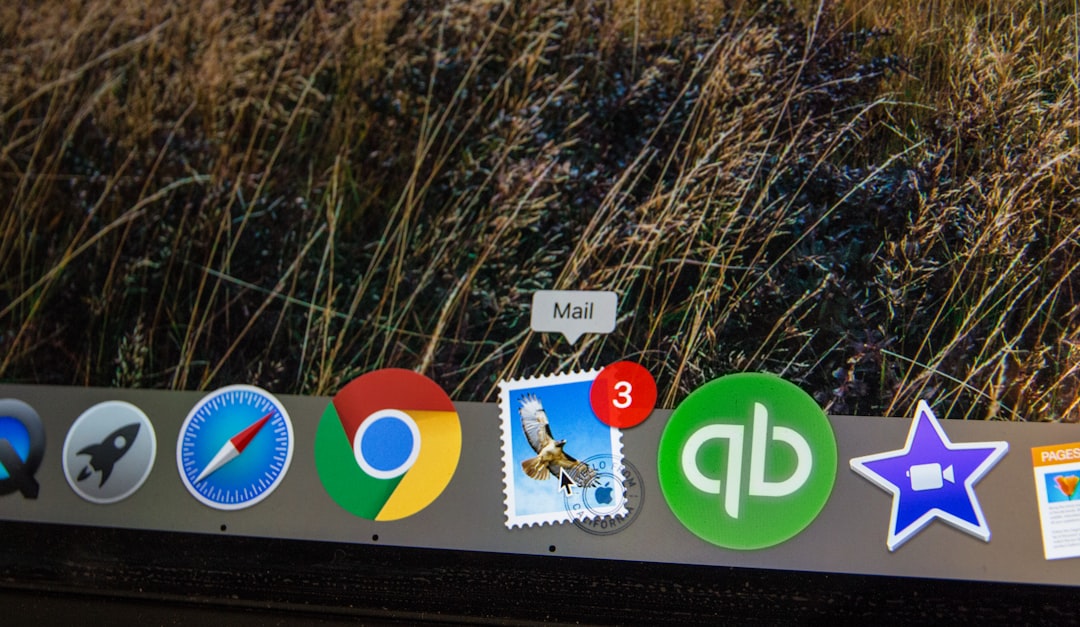Table of Contents
- Introduction
- Understanding the importance of email newsletters in digital marketing
- Identifying target audience and segmentation strategies
- Crafting compelling subject lines to increase open rates
- Incorporating storytelling to enhance engagement
- Using visuals and multimedia elements effectively
- Personalization techniques to connect with the audience
- Call-to-action strategies to drive conversions
- Tracking and analyzing performance metrics for continuous improvement
- Conclusion
- Frequently Asked Questions
Introduction
In the bustling world of digital marketing, where every brand competes for a moment in the spotlight, harnessing the power of email newsletters can be your secret weapon. Imagine unlocking a direct channel to engage with your audience, deliver valuable content, and drive conversions—all at your fingertips. This article delves deep into how email newsletters can revolutionize your marketing strategy.
With the average person spending a significant amount of their day checking emails, the potential to captivate, influence, and grow your customer base is immense. But how do email newsletters hold their ground amidst other modern marketing methods? The answer lies in their ability to nurture relationships, segment audiences, personalize messages, and much more.
Below is a snapshot of key benefits that email newsletters offer:
| Benefit | Description |
|---|---|
| Personalization | Tailor content to specific audience segments. |
| Cost-Effectiveness | Reach a large audience without breaking the bank. |
| Measurable Results | Track open rates, clicks, and other metrics effectively. |
Join us as we explore the untapped potential of email newsletters and how they can propel your marketing success stories.
Understanding the importance of email newsletters in digital marketing
Email newsletters are a vital component of any successful digital marketing strategy. They offer a direct line of communication between a business and its audience, allowing for personalized engagement with consumers. By regularly sending out newsletters, companies can keep their audience informed about new products, services, or significant updates within the organization. This consistent communication helps in building a relationship with the audience, fostering loyalty and trust.
The importance of email newsletters lies in their ability to drive traffic, increase sales, and provide valuable insights. By tracking open and click-through rates, businesses can gather data on what content resonates most with their audience. This information can be used to refine and tailor future content, ensuring relevancy and engagement.
To maximize their effectiveness, newsletters should be informative yet concise, offering value in every edition. Incorporating eye-catching visuals, compelling call-to-actions, and personalized content strategies are key in engaging readers. By balancing promotional content with informative and engaging stories or updates, businesses can maintain interest and foster a loyal subscriber base.
Identifying target audience and segmentation strategies
Identifying your target audience is a critical step in crafting any successful email marketing strategy. It involves understanding the demographics, interests, and behaviors of the people you wish to engage with. A well-defined audience allows marketers to tailor their messages and offers, significantly increasing engagement and conversion rates. Without a clear understanding of who your audience is, it’s challenging to create content that resonates with them.
Segmentation strategies take this a step further by dividing your audience into distinct groups based on specific criteria, such as age, gender, location, purchase history, or interaction levels with previous emails. Segmentation allows for highly personalized communication, ensuring that recipients receive content that is most relevant to them. This personalization can be achieved by creating various customer personas, each representing a different subset of your audience. By doing so, companies can craft targeted email newsletters that are more likely to capture attention and foster a connection, ultimately leading to higher success rates in achieving marketing goals.
An effective use of segmentation not only boosts engagement but also optimizes the return on investment by focusing resources on the most promising leads. Therefore, understanding and applying audience identification and segmentation strategies is paramount for any robust email marketing strategy.
Crafting compelling subject lines to increase open rates
Crafting compelling subject lines is a crucial aspect of email marketing as it directly impacts the open rates of your email newsletters. An enticing subject line can capture the attention of your audience, prompting them to click and explore further. The first step in creating an engaging subject line is to know your audience and tailor the message to their interests and needs. Utilizing personalization techniques, such as including the recipient’s name or mentioning a specific interest, can significantly boost engagement.
Incorporating action-oriented language encourages readers to take immediate action, while a sense of urgency or exclusivity can create curiosity and anticipation. Experimenting with different styles, such as questions, lists, or intriguing statements, can also increase their effectiveness. Additionally, keeping the subject lines concise and clear ensures your message is easily digestible in a crowded inbox. Lastly, regularly testing different subject lines and analyzing their performance helps in understanding what resonates best with your audience, enabling continuous refinement and improvement of your strategy. These elements combined will contribute to crafting subject lines that not only capture attention but also drive significant engagement for your email newsletters.
Incorporating storytelling to enhance engagement
Incorporating storytelling into email newsletters is an effective strategy for enhancing engagement with your audience. Storytelling is a powerful tool that captures attention, evokes emotions, and creates a personal connection with readers. By weaving narratives into your newsletters, you can transform mundane updates into compelling stories that resonate with your audience and keep them interested.
To effectively integrate storytelling into your email marketing strategy, begin by understanding your audience’s needs and interests. Craft stories that are relevant and relatable, providing value and insights that align with your brand’s message. Stories should be authentic and genuine, reflecting your brand’s voice and values.
Consider using real-life examples, customer testimonials, or behind-the-scenes stories that humanize your brand and provide a glimpse into its unique culture and operations. Additionally, incorporating multimedia elements such as images, videos, and interactive content can enhance the storytelling experience and increase engagement.
Finally, end your newsletter with a call-to-action that encourages readers to engage further, whether it’s visiting your website, reading a related blog post, or sharing their thoughts on social media. By consistently delivering engaging stories, your newsletters can become a key component of your overall email marketing strategy, fostering loyalty and building a strong community around your brand.
Using visuals and multimedia elements effectively
Integrating visuals and multimedia elements into email newsletters can significantly enhance their engagement levels. Images, videos, and infographics can capture the audience’s attention, breaking the monotony of text-heavy content. To effectively use visuals, it’s essential to ensure they are relevant to the content and align with the brand’s message. Employing high-quality images can make the newsletter appear more professional and appealing, while personalized visuals resonate more with subscribers, making the content feel tailor-made.
Videos are another powerful tool; incorporating them can increase click-through rates substantially. Whether they are product demonstrations, customer testimonials, or behind-the-scenes glimpses, videos enrich the storytelling aspect, offering more value to the readers. However, remember to keep such multimedia lightweight, ensuring fast loading times for optimal user experience.
Furthermore, using GIFs can add an element of fun and movement, capturing the reader’s curiosity. Infographics simplify complex information, making it digestible and sharable. Overall, a balanced mix of text and visuals can transform newsletters from mere reading material into interactive experiences. By doing so, businesses can strengthen their connection with the audience and build loyalty over time, ultimately enhancing their marketing strategy’s effectiveness.
Personalization techniques to connect with the audience
Personalization in email newsletters is a powerful technique to forge a deeper connection with your audience. By tailoring content to individual preferences and behaviors, businesses can create a more relevant and engaging experience for their subscribers. One effective method is to segment your audience based on demographics, purchase history, or engagement levels. This allows you to send targeted newsletters that resonate with specific groups.
Additionally, incorporating the recipient’s name in the subject line or greeting adds a personal touch that can increase open rates. Another technique is to recommend products or content based on past interactions, which shows subscribers that you understand their interests and needs. Dynamic content blocks that change according to user data can also enhance personalization, offering a customized viewing experience within the same newsletter.
Finally, using interactive elements such as quizzes or polls can encourage engagement and provide valuable feedback, helping to refine future personalization efforts. By continuously analyzing subscriber data and testing different approaches, businesses can ensure their email newsletters remain a vital component of an effective email marketing strategy, driving higher engagement and fostering loyalty.
Call-to-action strategies to drive conversions
Call-to-action (CTA) strategies are vital for driving conversions in email newsletters and can significantly impact the success of your email marketing campaigns. A well-crafted CTA should be compelling, clear, and aligned with your overall goal. Firstly, consider the placement of your CTA. It should be easily visible, preferably above the fold, to catch the reader’s attention immediately. Using action-oriented language that instills urgency, like ‘Get Started Now,’ or ‘Limited Time Offer,’ can motivate readers to act promptly. Additionally, personalizing your CTAs can enhance engagement. Tailoring messages to include the reader’s name or specific interests can make them feel valued and more likely to respond. Employing contrasting colors for your CTA button ensures it stands out but remains consistent with your brand’s visual identity. Testing different CTAs through A/B testing allows you to determine what resonates best with your audience, optimizing for higher conversion rates. Lastly, providing a clear path to action post-CTA click—whether it’s a seamlessly designed landing page or a simple checkout process—ensures the reader’s journey is smooth and increases the likelihood of conversion.
Tracking and analyzing performance metrics for continuous improvement
In the realm of email marketing, tracking and analyzing performance metrics is crucial for continuous improvement. Understanding these metrics helps marketers refine their strategies and enhance the impact of their email newsletters. Key performance indicators (KPIs) such as open rates, click-through rates (CTR), and conversion rates provide valuable insights into how subscribers are engaging with your content. For instance, a low open rate might suggest that subject lines need to be more compelling, while a low CTR could indicate that the content isn’t resonating with the audience.
Advanced analytics tools can help track user behavior, segment your audience more effectively, and test different versions of your emails to see what performs best. Implementing A/B testing allows you to experiment with elements such as layout, images, or call-to-action buttons, providing data-driven decisions that optimize future performance. Furthermore, monitoring unsubscribe rates and feedback can reveal areas needing improvement, ensuring your content remains relevant and engaging to your audience.
Ultimately, the ability to measure and analyze these metrics empowers businesses to adapt their email marketing strategies, fostering growth, and maintaining a strong connection with their subscribers over time.
Conclusion
In conclusion, leveraging email newsletters as a cornerstone of your digital marketing strategy can yield remarkable results. By understanding the critical elements of audience segmentation, personalized content, and compelling calls-to-action, businesses can foster deeper connections with their subscribers. Crafting subject lines that grab attention, weaving engaging narratives, and using visually stimulating multimedia content keeps audiences engaged and encourages higher conversion rates.
Moreover, the ability to analyze performance metrics offers a continuous feedback loop, enabling marketers to refine their strategies and optimize future campaigns. This adaptability is crucial in a fast-evolving digital landscape. With well-crafted email newsletters, not only can businesses maintain brand visibility and top-of-mind presence, but they can also transform their marketing efforts into a dynamic and profitable channel, driving both engagement and growth.

